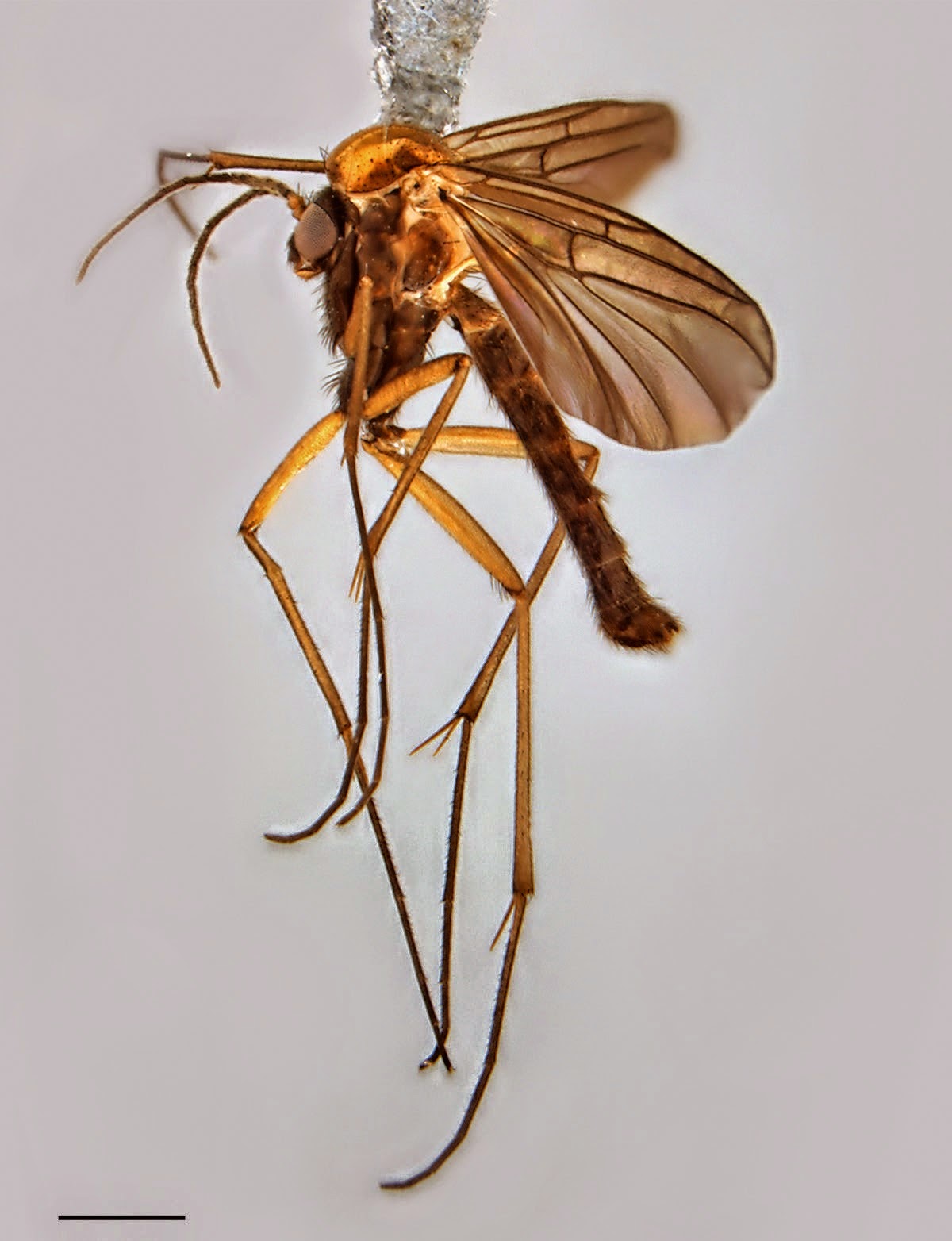Nycteribiid Bat Flies are True Flies, Diptera, that have lost their
wings and adopted a lifestyle as ectoparasites of Bats. They have an unusual
lifestyle, with the larva maturing within the female Fly (which only produces
one larva at a time), then being ‘laid’ during the pupa stage. The female Fly
leaves her host Bat to lay this pupa, which hatches 3-4 weeks later, producing
a new adult that then must find a new Bat host. Historically this group has not
been well studied, but it has recently been realized that Bats, and Bat
parasites, are important vectors for a number of pathogens, making the
understanding of relationships between members of the group and their hosts
important to understand.
In a paper published in the journal PLoS One on 27 September 2013, Pablo
Tortosa of the Centre de Recherche et de Veillesur les MaladiesEmergentes dans l’Océan Indien and the Université de La Réunion, Najla Dsouli of
the Centre de Recherche et de Veillesur les Maladies Emergentes dans l’OcéanIndien
and the Institut de Recherche pour le Développement, Yann Gomard and Beza Ramasindrazana
of the Centre de Recherche et de Veillesur les Maladies Emergentes dans l’Océan Indien,
the Université de La Réunion and the Institut de Recherche pour le Développement,
Carl Dick of the Department of Biology at Western Kentucky University and the FieldMuseum of Natural History and Steven Goodman of the Field Museum of Natural
History and Association Vahatra investigated the relationships between
Nycteribiid Bat Flies and Bats on Madagascar and in the Comoros Islands.
Tortosaet al. sampled Bat
Flies from two genera of Bats, the fruit-feeding Rousettus and the insectivorous Miniopterus.
One species of Rousettusis found in
the Comoros (Rousettus obliviosus) and
one in Madagascar (Rousettus madagascariensis),
the two species being separated from one-another by about 300 km of open water,
which they are apparently unable to cross, and by a similar distance of water
from their nearest relative, Rousettus aegyptiacus
on the African mainland. The situation with Miniopterus
is less simple; two species (Miniopterus griveaudi and
Miniopterus aelleni) are found on both
Madagascar and the Comoros, and show no genetic differentiation between the two
populations, suggesting that these Bats can and do cross the distance between
the islands. Another six species of Miniopterus (Miniopterus gleni, Miniopterus mahafaliensis, Miniopterus majori,
Miniopterus manavi, Miniopterus petersoni and Miniopterus sororculus) are found on
Madagascar only. All these Bats roost in caves in mixed assemblages, often with
members of both genera.
The Bats of the genus Rousettus were
found to each be infested by a single species of Bat Fly of the genus Eucampsipoda, with Eucampsipoda madagascarensis parasitizing Rousettus madagascariensis on Madagascar, and Eucampsipoda theodoritargeting Rousettus obliviosus
in the Comoros.
Eucampsipoda madagascarensis, adult female, dorsal habitus, from Rousettus madagascariensis. Tortosa et al. (2013).
Miniopteru sgriveaudiwas found to be infested by a single species of Bat Fly in the
Comoros, Nycteribia stylidiopsis, but
on Madagascar was also infested by Penicillidia leptothrinax and
a second, unknown species of Penicillidia.
Miniopteru saelleni was not
encountered in the Comoros during the study, but was found to be infested by Nycteribia stylidiopsis in Madagascar.
Penicillidia leptothrinax, adult female, dorsal habitus, from Miniopterus manavi. Tortosa et
al. (2013).
Nycteribia stylidiopsis was also found on Miniopterus gleni,
Miniopterus majori, and Miniopterus petersoni on Madagascar,
while Penicillidia leptothrinax was
also found on Miniopterus gleni, Miniopterus mahafaliensis, Miniopterus majori, Miniopterus manavi, Miniopterus petersoni
and Miniopterus sororculus, while the
new species of Penicillidia was also
found on Miniopterus gleni. This
suggests that these Flies happily move between Bats of the genus Miniopterus, though they apparently
avoid the unrelated Rousettus.
Nycteribia stylidiopsis, adult female, dorsal habitus, from Miniopterus gleni. Tortosa et
al. (2013).
A genetic study of the Bat flies showed that as with their hosts,
the two species of Eucampsipoda from Madagascar
and the Comoros were distinct, while the populations of Nycteribia stylidiopsis from Madagascar and the Comoros were
undistinguishable and apparently not separate. Two species of Penicillidia were encountered, both
restricted to Madagascar.
See also…
 A new species of Fungus Gnat from the giant Sequoia groves of the Sierra Nevada Mountains, California.
A new species of Fungus Gnat from the giant Sequoia groves of the Sierra Nevada Mountains, California.Robber Flies (Asilidae) are True Flies (Diptera) noted for their aggressive predatory behaviour, which includes taking other Insects on the wing. They are stout, bristly Flies, found across the globe other than in the Antarctic, but favouring open grasslands. Robber Flies can be quite large, with most species over 1 cm in length, and the biggest exceeding 5 cm. The Group have a fossil record dating back to the Early Cretaceous, with the...
Winter Crane Flies (Trichoceridae) are large True Flies (Diptera) with a (slightly erroneous) reputation for being tolerant of cold conditions. In fact a few species are capable of remaining active in winter, with some even mating and laying eggs beneath snow cover, but other...
Follow Sciency Thoughts on Facebook.





